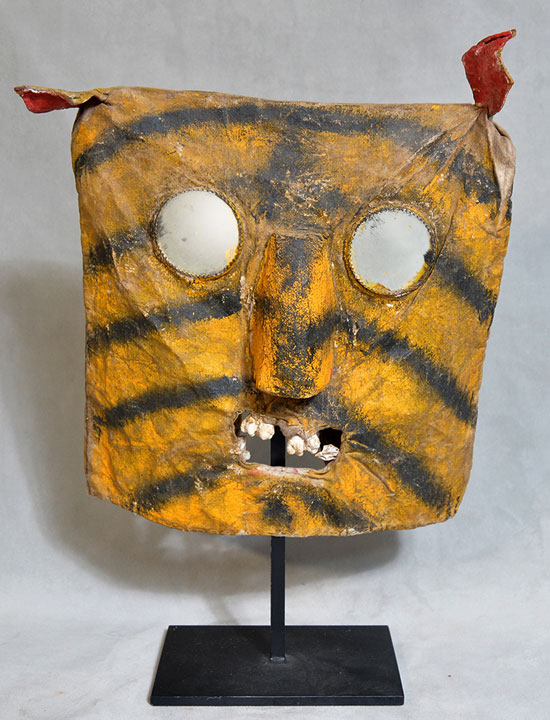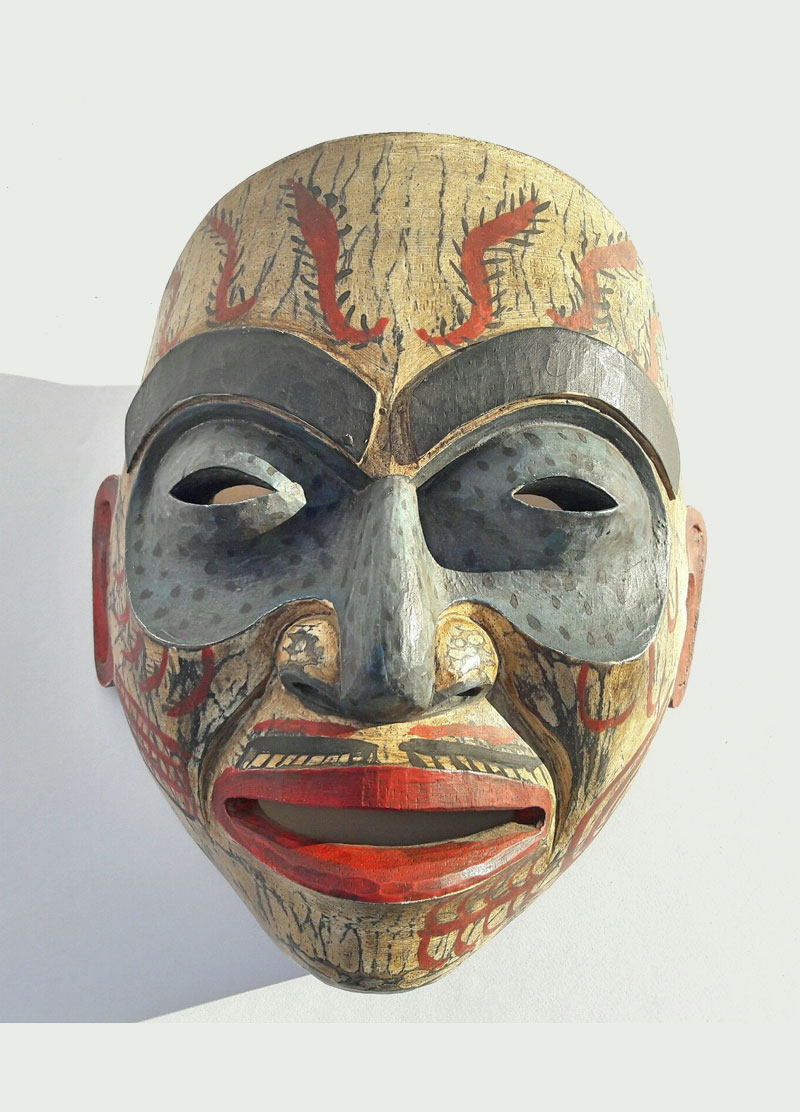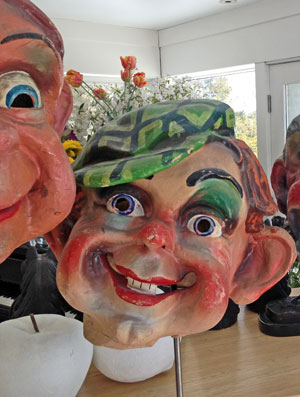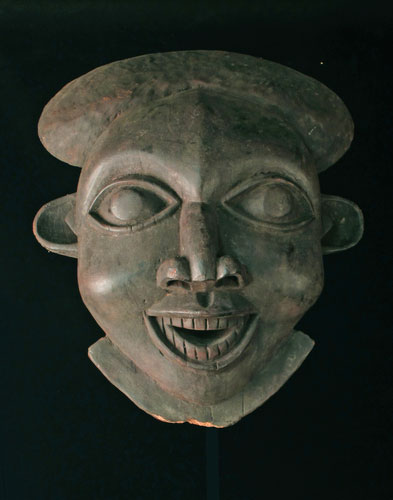 Q: I bought this mask at an estate sale yesterday for $35. The estate sale person knew nothing about its origins or age, but the estate was full of local art items and collectibles. A friend suggested that the eyes of this mask remind her of work by sculptor Enrique Alférez who was Mexican but lived and worked in New Orleans in the 1930s. I’d appreciate any ideas or suggestions. Thanks! Nancy, 978
Q: I bought this mask at an estate sale yesterday for $35. The estate sale person knew nothing about its origins or age, but the estate was full of local art items and collectibles. A friend suggested that the eyes of this mask remind her of work by sculptor Enrique Alférez who was Mexican but lived and worked in New Orleans in the 1930s. I’d appreciate any ideas or suggestions. Thanks! Nancy, 978
A: This looks almost like a Commedia dell’arte mask and it is very skillfully made. The professional carver could be from anywhere. Wooden masks for carnival and other celebrations are almost always painted. I’m sure this was made to sell as decorative art. C+





5 Comments
Nancy Jaynes
Thanks very much for posting my mask/inquiry. If any of your readers have any leads, I’d love to hear from them. The type of wood used in this mask reminds me of rustic Mexican pine, so when a friend suggested Enrique Alferez, I wondered, especially given the Art Deco lines of this mask. I also thought of Weimar Germany. If anyone has expertise to add, I’d appreciate it!
Bob Ibold
I’m impressed by your comments, so I’ll toss out this. The back of your mask appears to be thinly carved in a way that would make it comfortable to wear for a long time. There is no reason for a carver to go to this extra effort with decorative art.
Andrey
Photo of a similar mask has been on the Net for quite some time, however, no origins of the photo/mask were discovered. Please see for yourself: https://www.flickr.com/photos/apfelauge/5017876852/
On most occasions it’s called ‘A Smoking Mask’ which is of course not correct with the cigarette not being a part of the carving. Being unable to somehow clarify the origins of the mask I nevertheless congratulate you with a beautiful acquisition!
Andrey
Dear Nancy & Bob! Sorry for not limiting myself to just one comment. Thing is the mask on the BW photo was haunting me for years, so I took this as an opportunity to make an additional research, this time googling some different keywords.
Please consider checking out Goldscheider of Vienna porcelain masks, especially the works of Kurt Goebel and Adolf Prischl. Also Alan Ebeling of Sweden.
Here’s also a quotation from a friendly website: 1920s and 1930s ceramic masks, usually around 20-30cm in height and decorated in bold colours, are now a hot collecting field. Masks typically depict women with chic hairstyles or contemporary headwear, and each evokes the everyday glamour of the period.
This mask is wooden of course, but the designs seem to be strikingly similar.
Bob Ibold
I think Andrey is on the right track. This is wood art, not so much a mask. As such, it deserves a higher letter valuation.